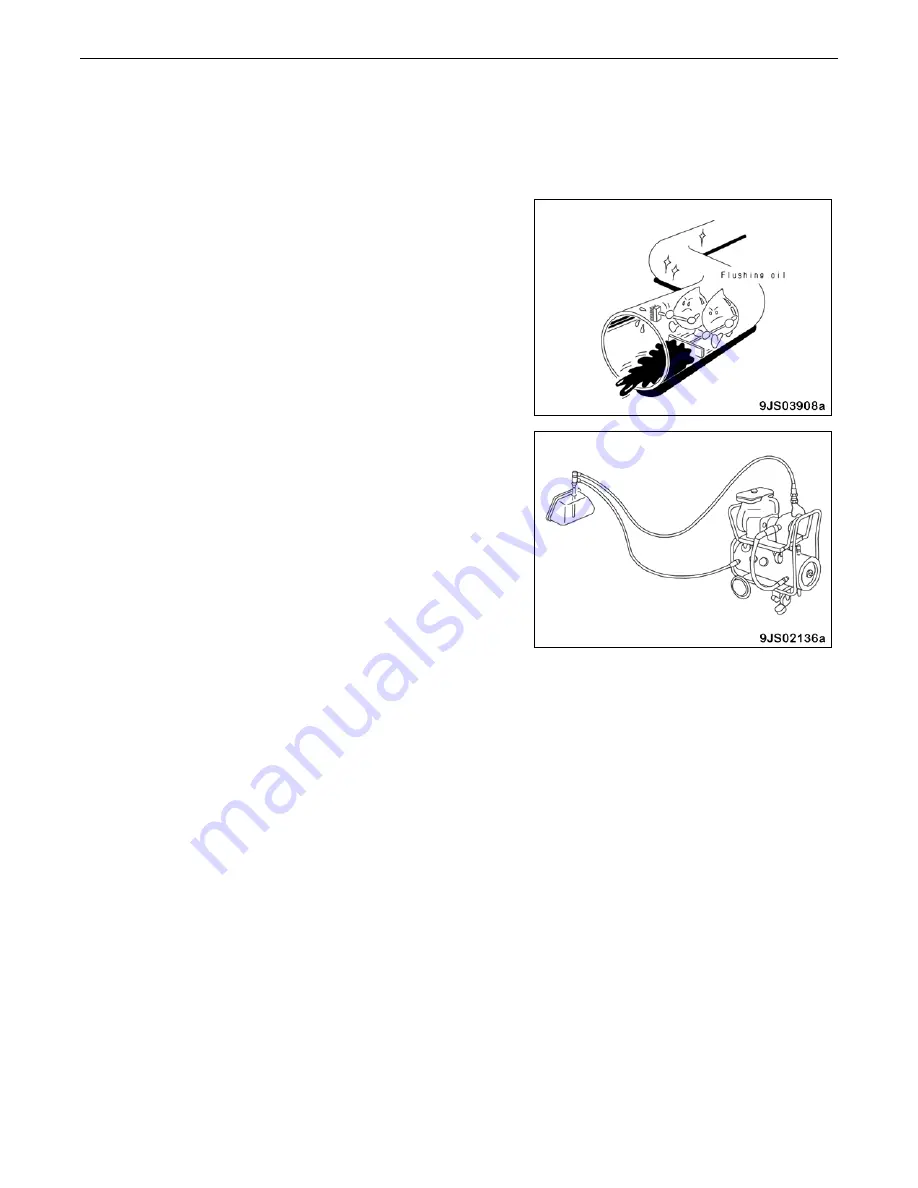
FOREWORD
HANDLING ELECTRIC EQUIPMENT AND HYDRAULIC COMPONENTS
00-18
WA470-6, WA480-6
12
5.
Change hydraulic oil when the temperature is high.
When hydraulic oil or other oil is warm, it flows easily. In addition, the sludge can also be drained out easily from the cir-
cuit together with the oil, so it is best to change the oil when it is still warm. When changing the oil, as much as possible
of the old hydraulic oil must be drained out. (Drain the oil from the hydraulic tank; also drain the oil from the filter and
from the drain plug in the circuit.) If any old oil is left, the contaminants and sludge in it will mix with the new oil and will
shorten the life of the hydraulic oil.
6.
Flushing operations.
After disassembling and assembling the equipment, or changing the
oil, use flushing oil to remove the contaminants, sludge, and old oil
from the hydraulic circuit. Normally, flushing is carried out twice:
primary flushing is carried out with flushing oil, and secondary
flushing is carried out with the specified hydraulic oil.
7.
Cleaning operations.
After repairing the hydraulic equipment (pump, control valve, etc.)
or when running the machine, carry out oil cleaning to remove the
sludge or contaminants in the hydraulic oil circuit. The oil cleaning
equipment is used to remove the ultra fine (about 3 m) particles that
the filter built in the hydraulic equipment cannot remove, so it is an
extremely effective device.
































